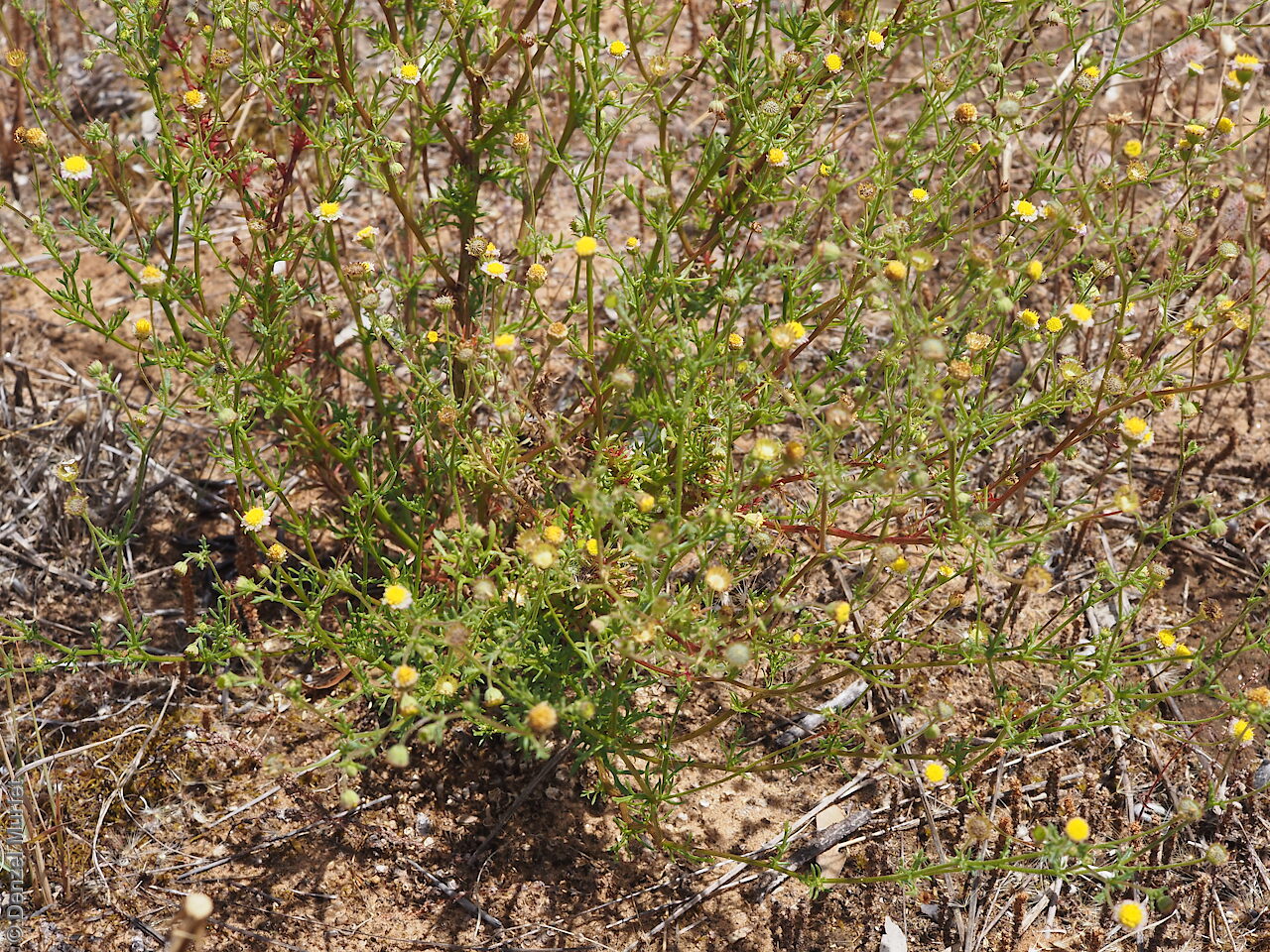
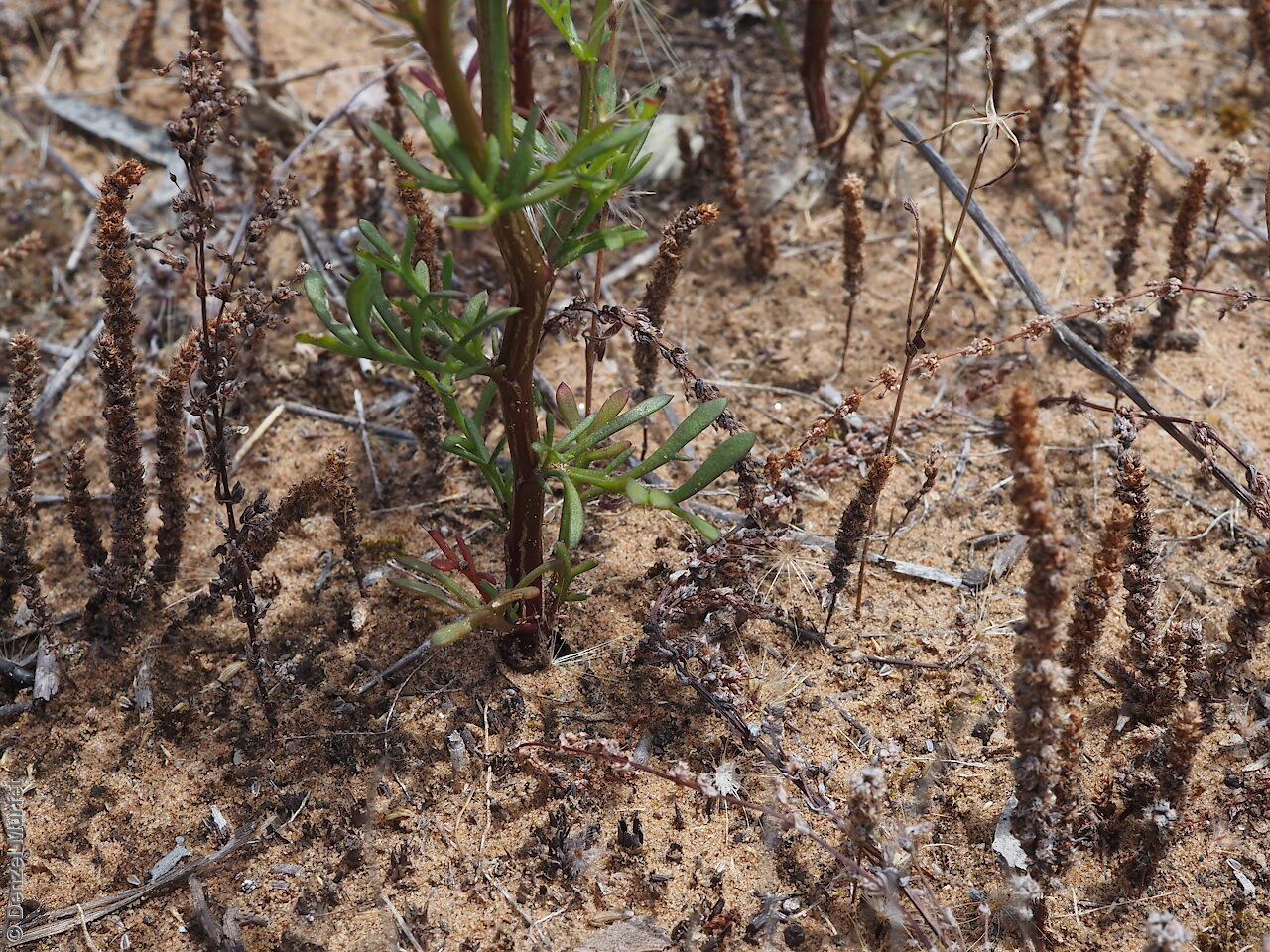
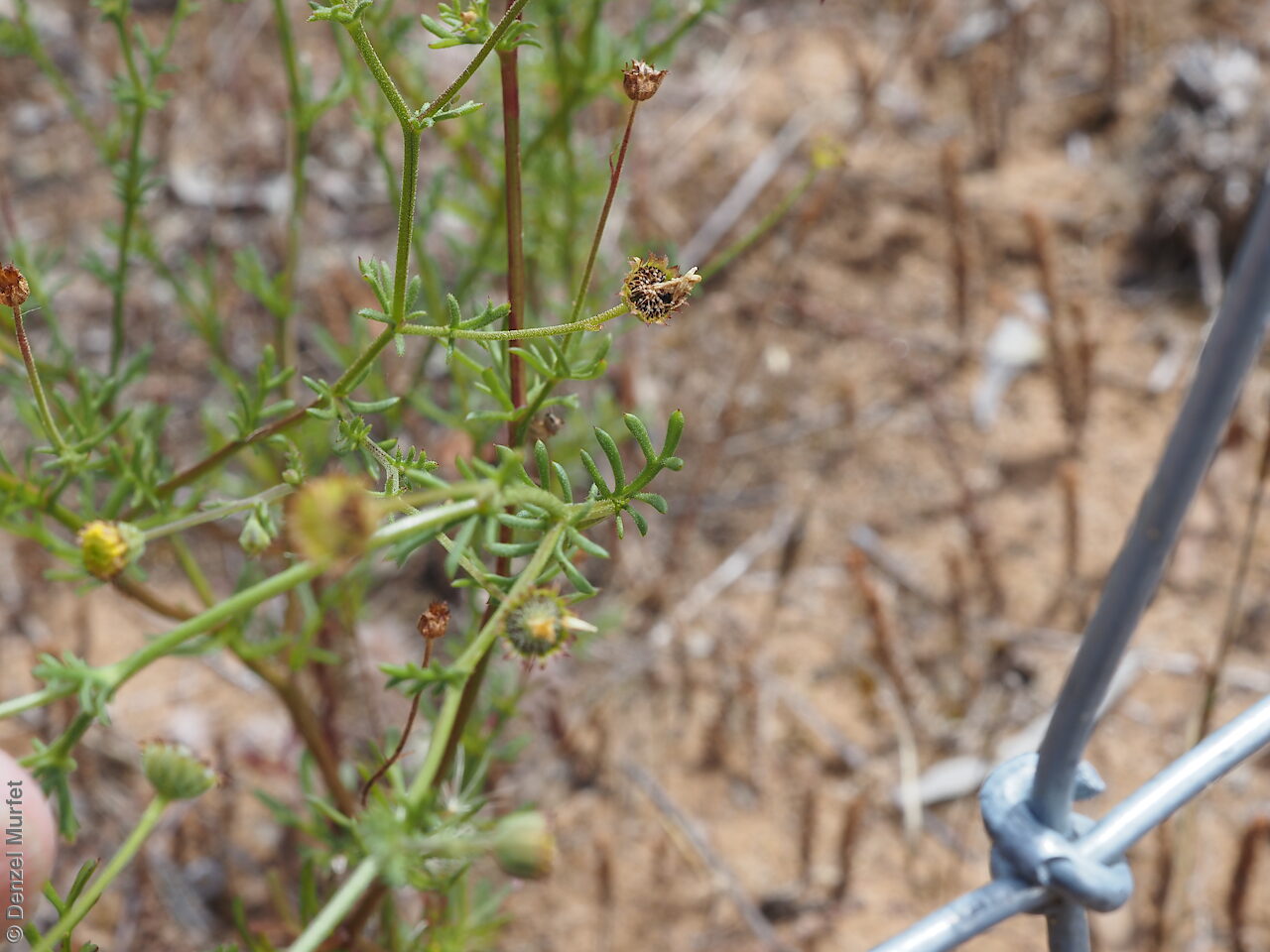
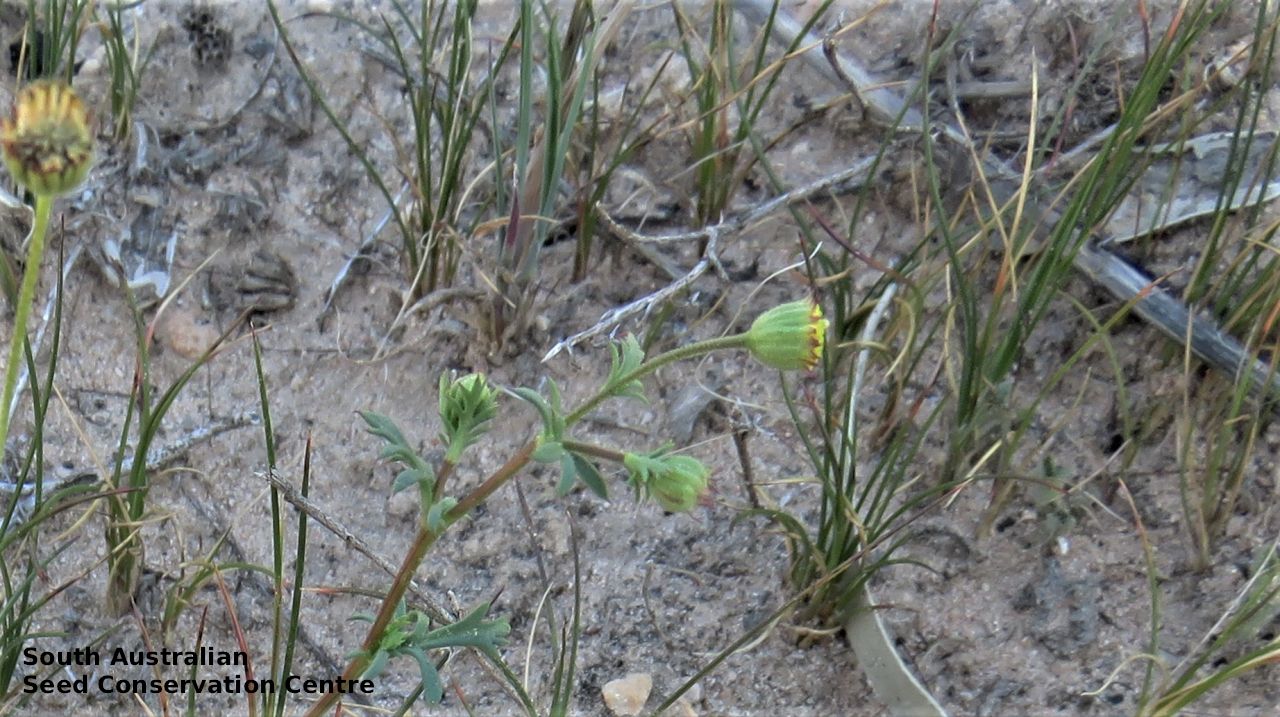
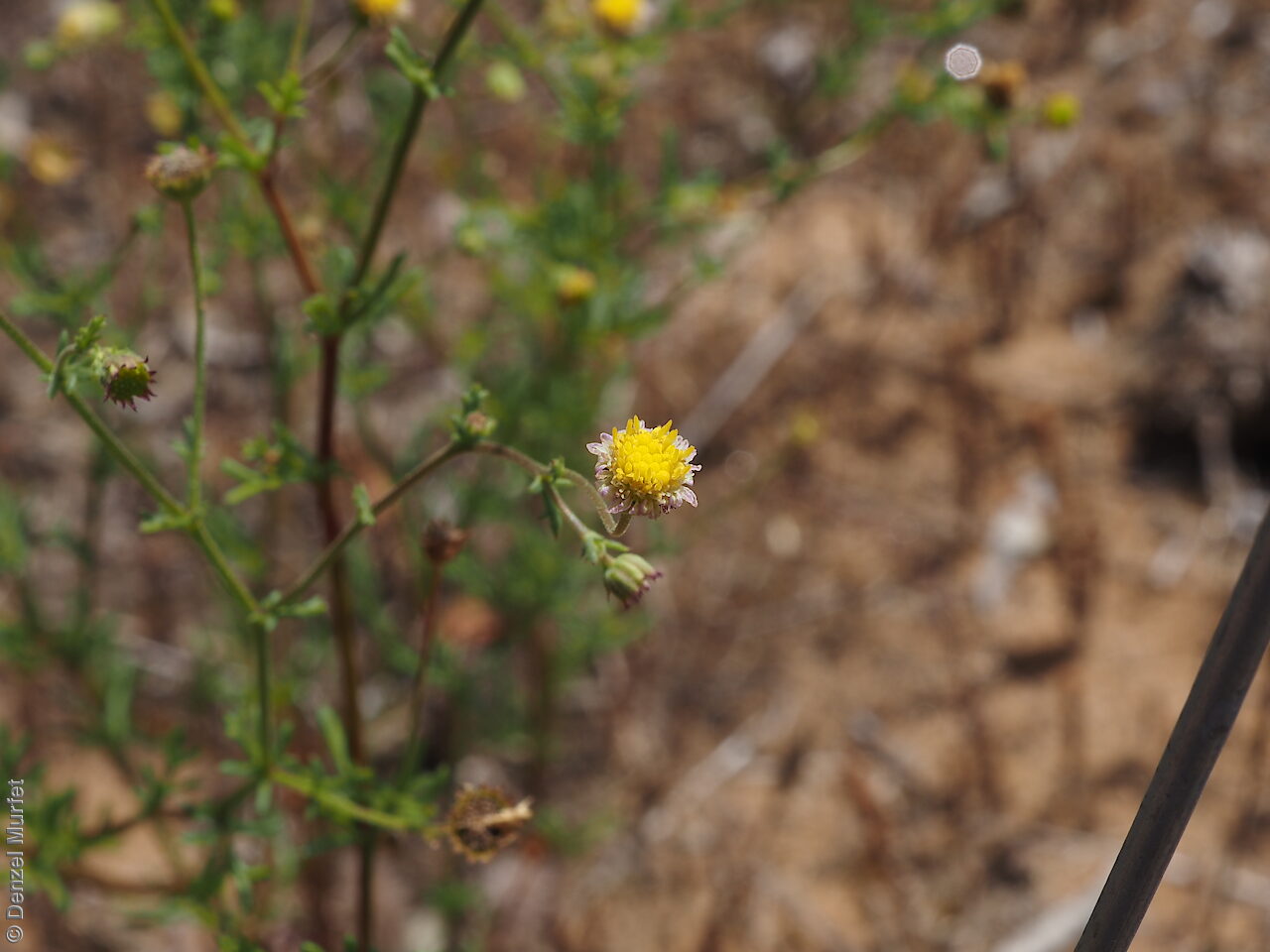
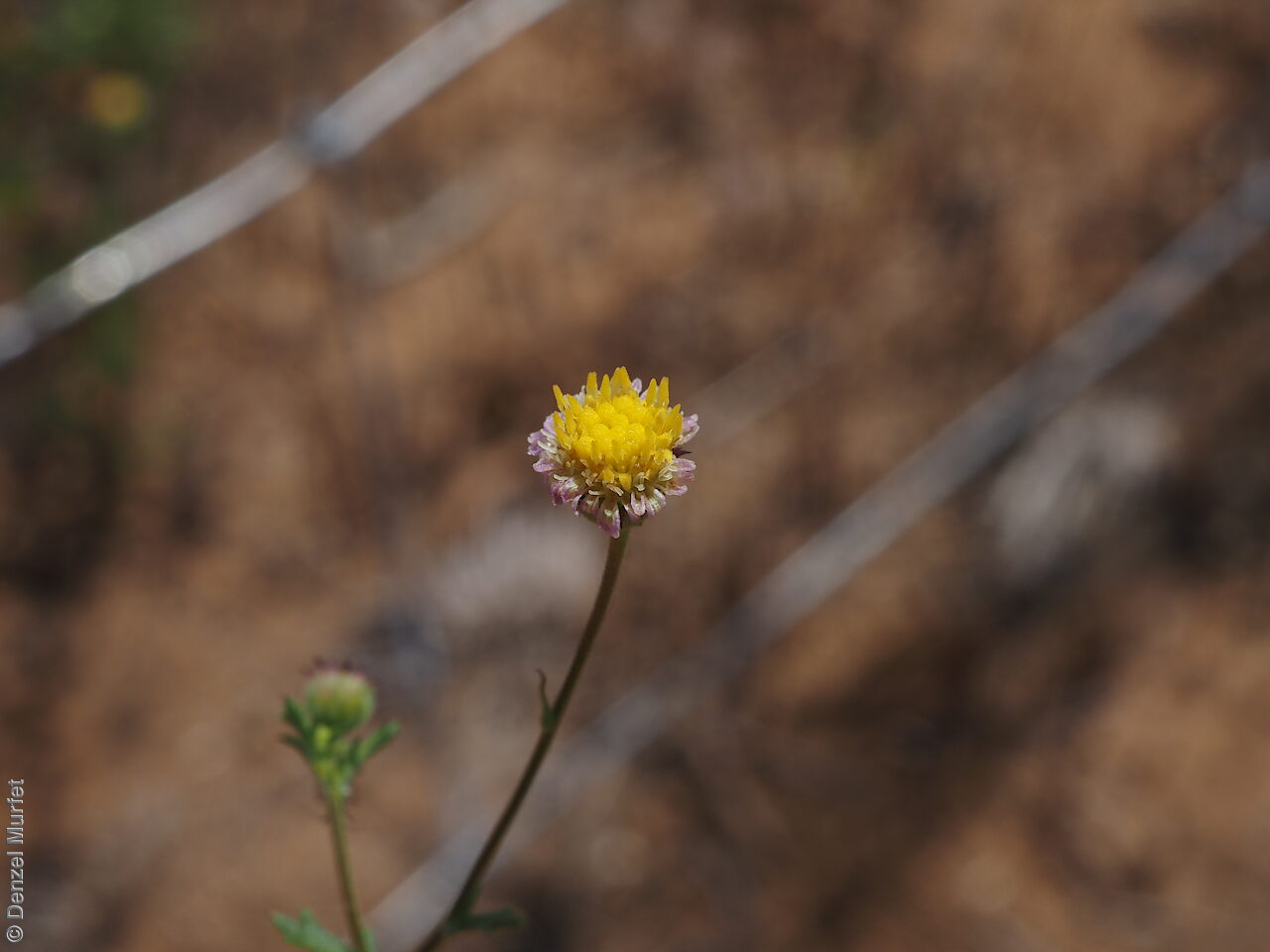
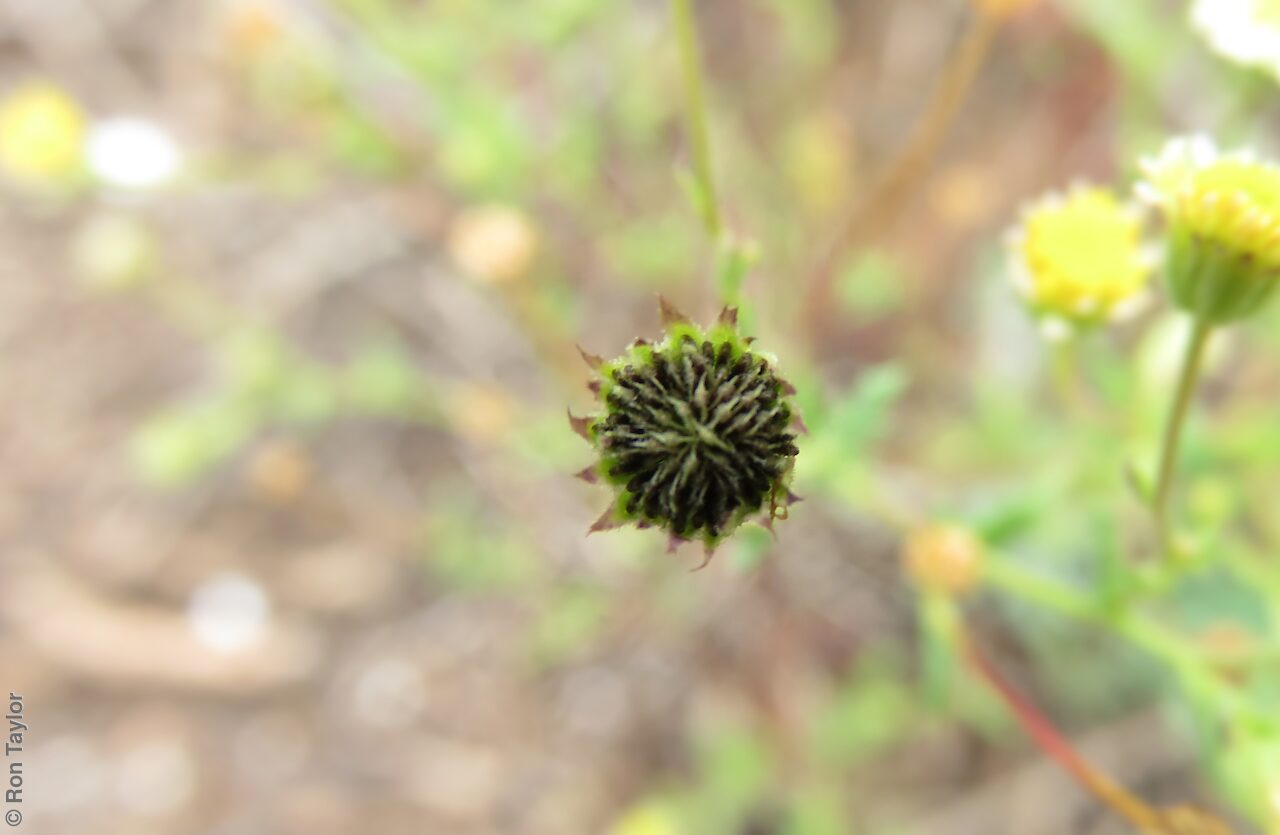
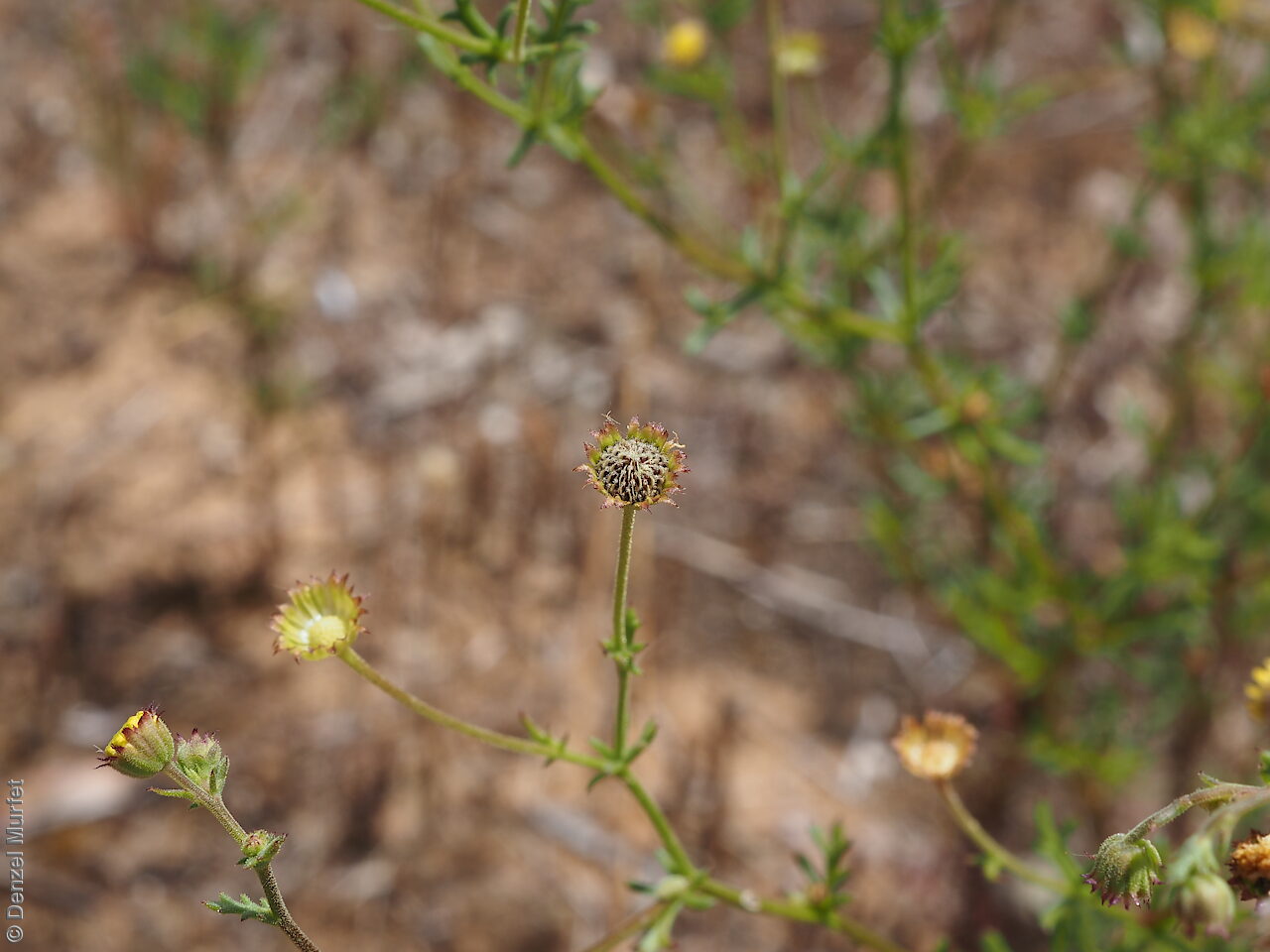
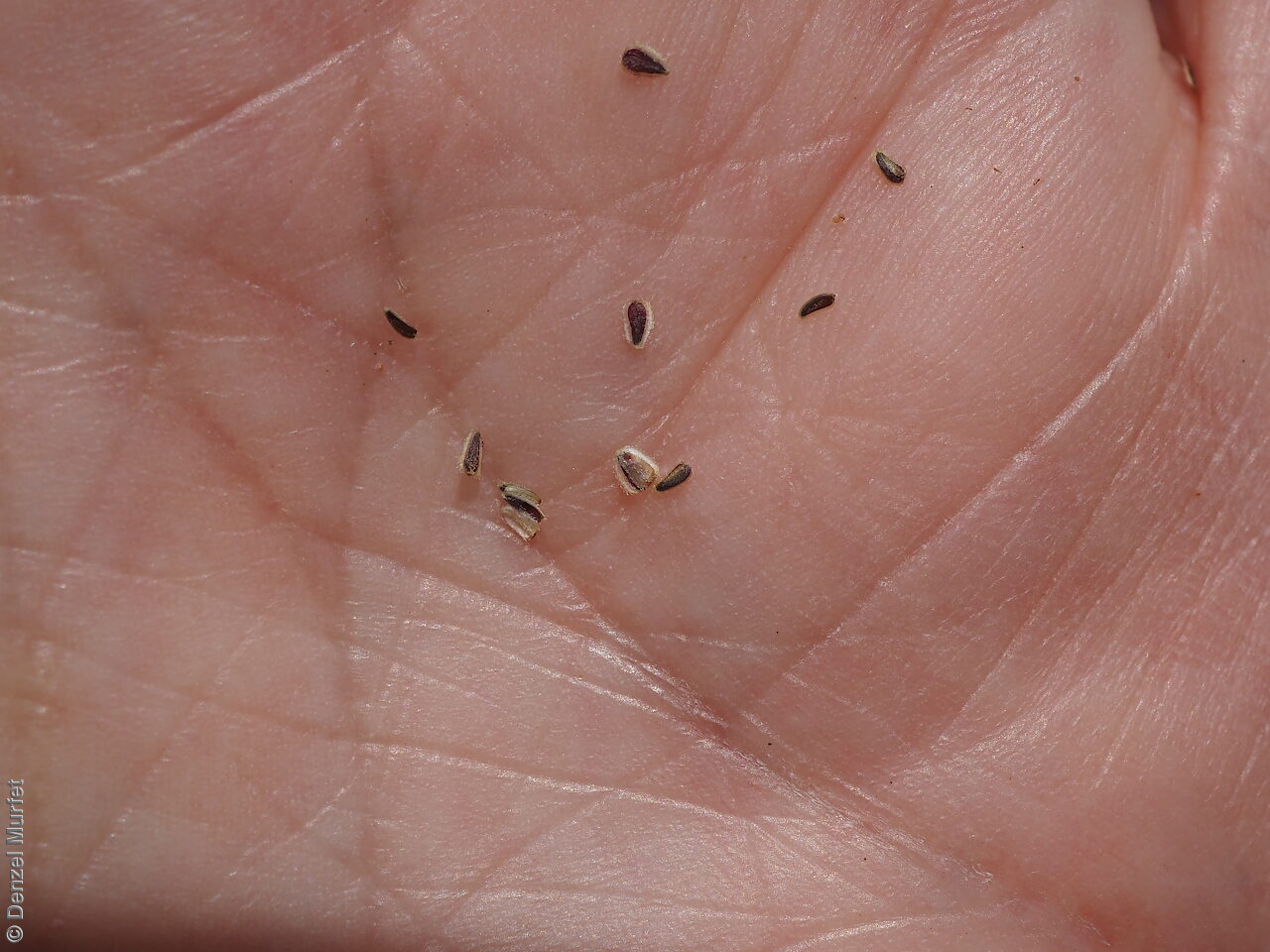
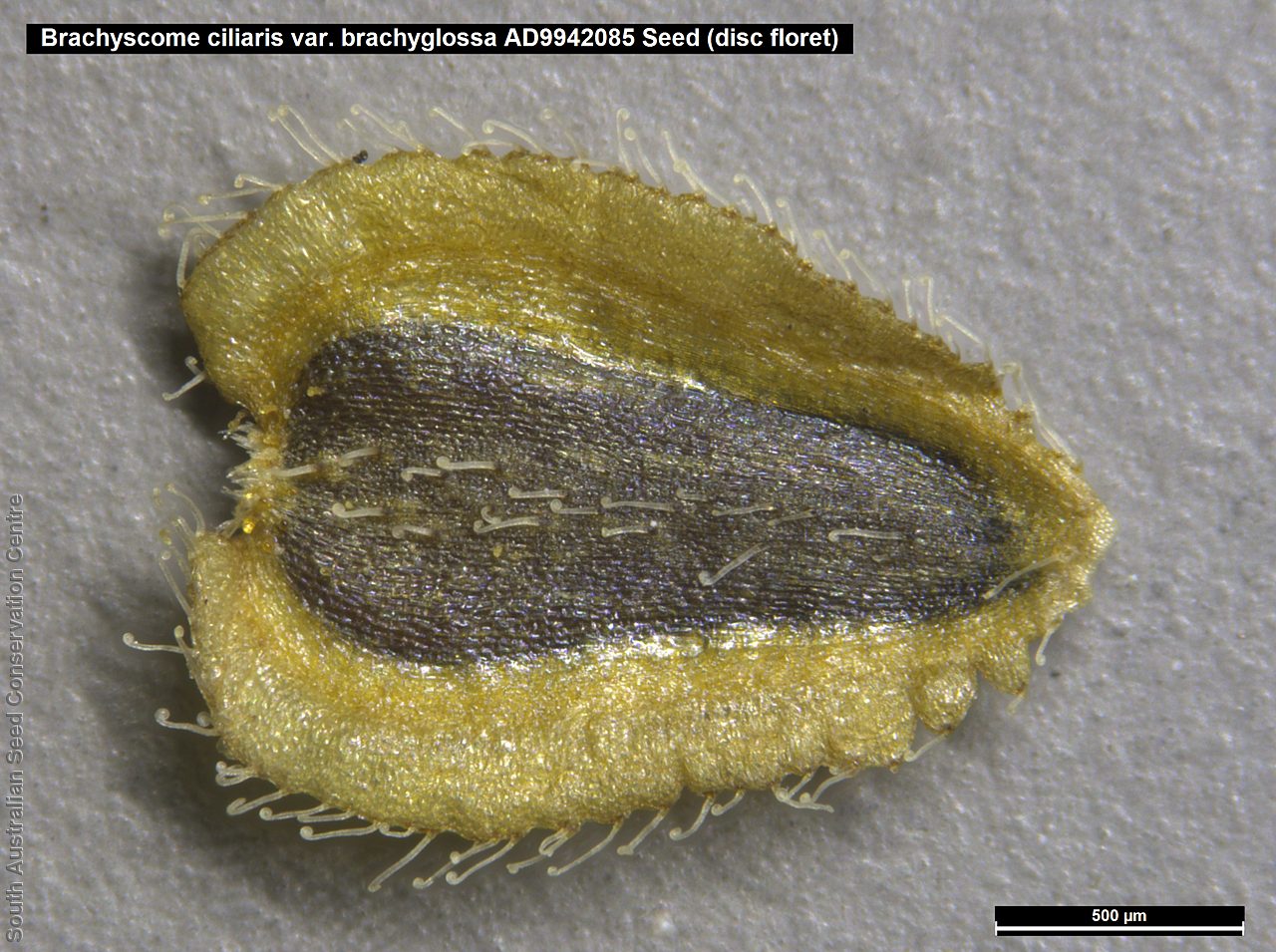
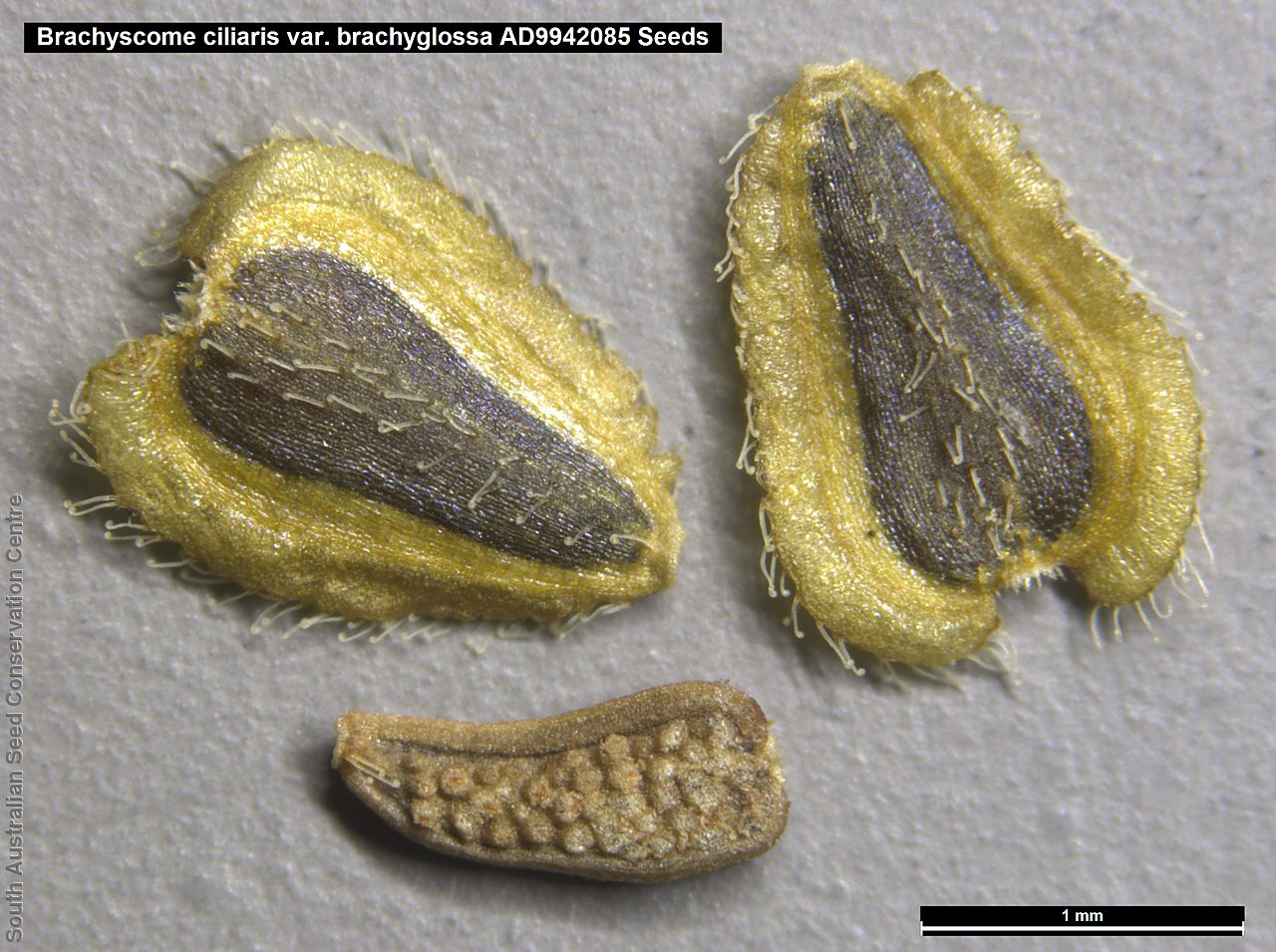
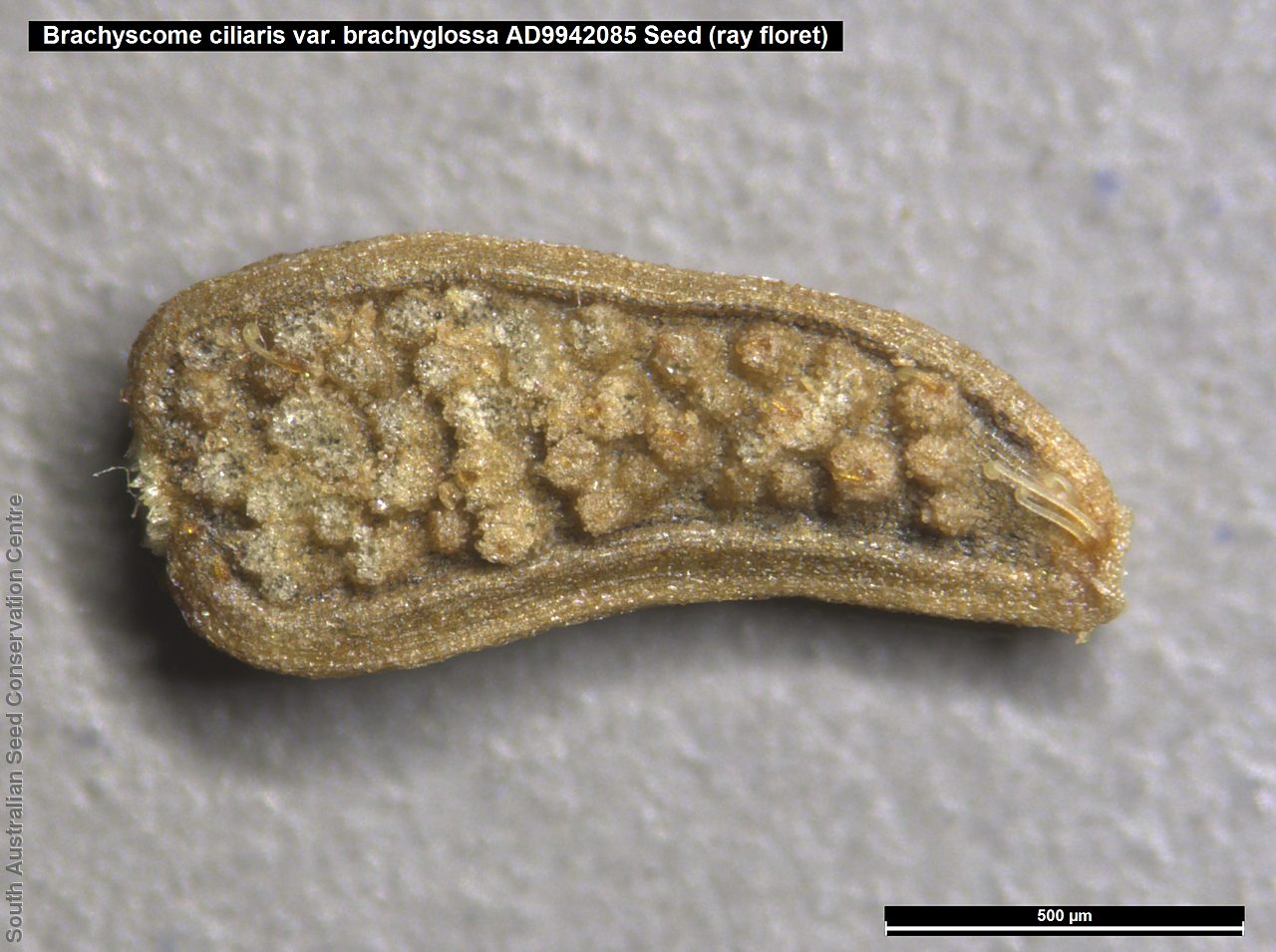

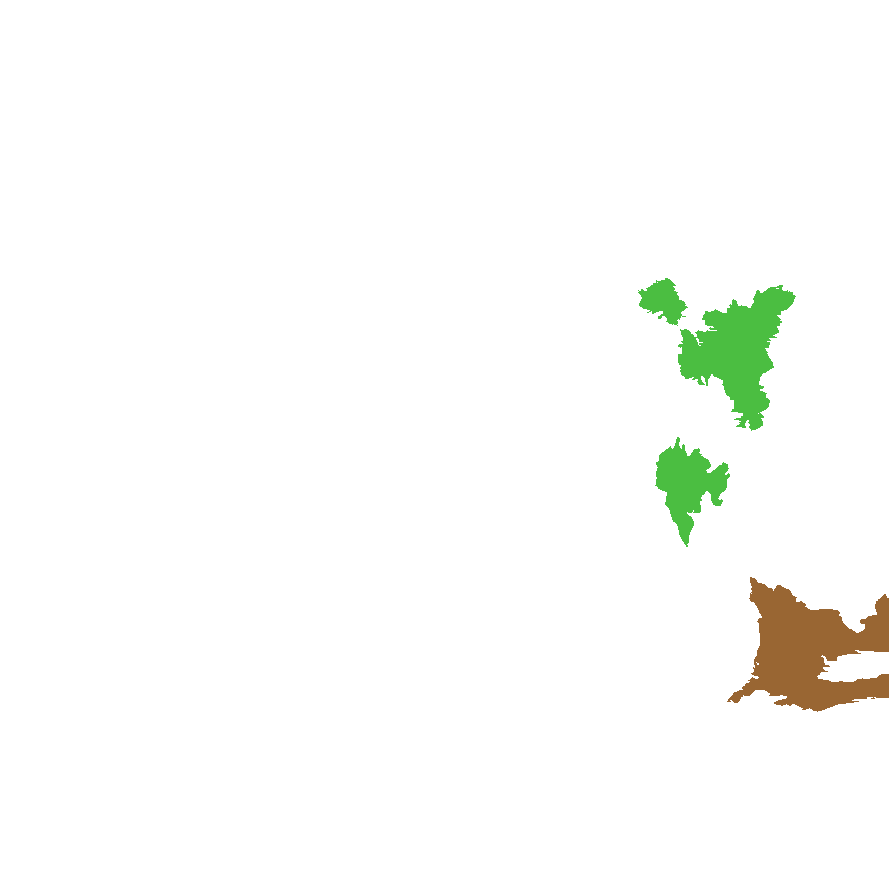
Botanical art
Prior names
Brachycome ciliaris var. brachyglossa
Common names
Rayless Fringed Daisy
Rayless Variable-daisy
Etymology
Brachyscome from the Greek 'brachys' meaning short and 'kome' meaning hair, referring to the short tuft of bristles or hairs of the pappus. Ciliaris from the Latin 'cilium' meaning eye-lash; referring to the fruit having the margins fringed with hairs. Brachyglossa from the Greek 'brachys' meaning short and and 'glossa' meaning tongue; referring to the rayless flowers due to the short hooded ligule.
Distribution and status
Found in the northern and southern Flinders Ranges and the Murrayland, growing on sandy loam and clay loam soil in open woodlands and grasslands. Also found in Victoria. Native. Rare in South Australia. Rare in Victoria.
Herbarium regions: Flinders Ranges, Eastern, Murray
NRM regions: South Australian Arid Lands, South Australian Murray-Darling Basin
AVH map: SA distribution map (external link)
Plant description
Erect annual herb with moderately dense glandular hairs on the stem and branches. Leaves to 1.5 cm long, with moderately dense glandular hairs, pinnatisect to pinnatifid with 1–4 linear segments on each side. Involucral bracts with dense glandular hairs. Ligules inconspicuous, more or less abortive, hooded, to 2 mm long. This variety differs from the other four varieties found in South Australia, by having pinnatisect leaves with linear segments, non woolly stems and short hooded ligules. Flowers throughout the year. Fruits are brown daisy heads. Seed embryo type is spatulate fully developed.
Seed collection and propagation
Collect seeds between January and December. Pick heads that are maturing, drying off, with brown seeds that dislodge easily. Place the seed-heads in a tray and leave to dry for a week. Then gently rub the heads by hand to dislodge the seeds. Use a sieve to separate the unwanted material. Store the seeds with a desiccant such as dried silica beads or dry rice, in an air tight container in a cool and dry place. This species may have physiological dormancy that needs to be overcome for the seed to germinate. No difference in germination between ray and disc seeds. Germination occurs more rapidly under winter conditions.